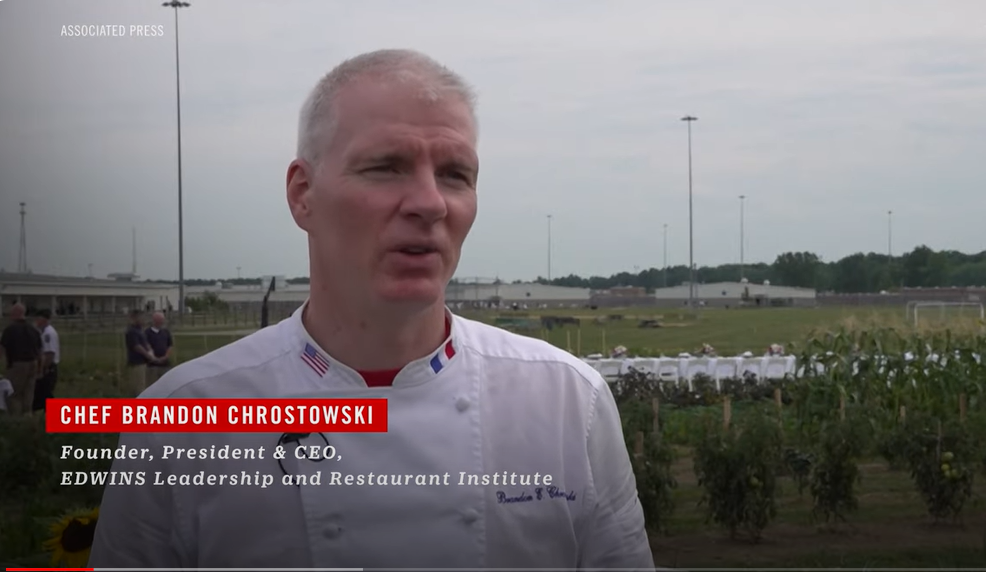Would you choose to have a gourmet five-course dinner in a prison? And what if the meal was prepared by the inmates?
In a move that’s stirring both curiosity and admiration, an Ohio state prison has recently hosted what’s being hailed as a historic event: a five-course gourmet meal open to the public, prepared and served by the inmates themselves. This unprecedented event took place in the lush gardens of the Grafton Correctional Institution, marking a noteworthy occasion not just for the facility but for the state’s penal system at large.
The event, which saw nearly 60 guests from the outside world stepping into the prison grounds, was part of a culinary program spearheaded by EDWINS Leadership and Restaurant Institute. The institute, known for its dedication to education within the prison system, offers a six-month course that equips incarcerated individuals with the skills necessary to thrive in fine dining establishments upon their release.
The evening began with a beet salad adorned with goat cheese and fresh greens. The meal continued with a kale “purse” filled with farmer cheese, showcasing the innovative spirit and imagination of the apprentice chefs/inmates. These were followed by roasted salmon topped with a béarnaise sauce and braised garden greens. Roasted lamb with tomato Provençal was also served. Dessert included a corn cake with blueberry compote and Chantilly cream. Eschewing alcohol, each course was paired with a mocktail, one of them named the “botinique” — soda with a thyme-infused honey syrup and lemon.

Chef Brandon Chrostowski, a James Beard Award semifinalist and the visionary behind the program, believes in the power of second chances. “Figuratively what is happening is that we’re reframing what’s possible in prison,” he said.
His partnership with Grafton Correctional Institution dates back to 2012, and together they’ve crafted a curriculum that’s more than just about cooking—it’s about changing lives. The program was born out of the belief that “every human being, regardless of their past, has the right to a fair and equal future,” Chrostowski said.
The tables were set amidst the “EDWINS’ Garden” and “Hope City Garden,” where the incarcerated men cultivate a variety of fruits, vegetables, and herbs. These gardens not only provide ingredients for the culinary course but also serve as a symbol of growth and nurturing—themes that resonate deeply with the program’s ethos.
One of the participants, Greg Sigelmier, shared his journey of personal growth through the program. Initially joining the kitchen crew to avoid the spotlight, he found courage and confidence, contemplating a future in the culinary industry upon his release.

28-year-old Efrain Paniagua-Villa, an inmate for the past two and a half years, already had some experience cooking for his mother and sister. He expressed his opinion that, “Working together as the community that we are and at the end getting to eat the food, it’s the best part. You should see the faces on these guys when they’re eating just the regular chicken noodle soup that we just all worked together. It’s incredible.” His story is a powerful reminder of the program’s impact, and of the human potential to be found in unexpected places.
The program’s goal is to challenge preconceived notions about prison life and the meal highlighted the rehabilitative power of culinary arts. The Ohio prison’s five-course meal event is a bold step towards reframing the possibilities within the correctional system. It’s a narrative of redemption, skill-building, community engagement and opportunity.












